



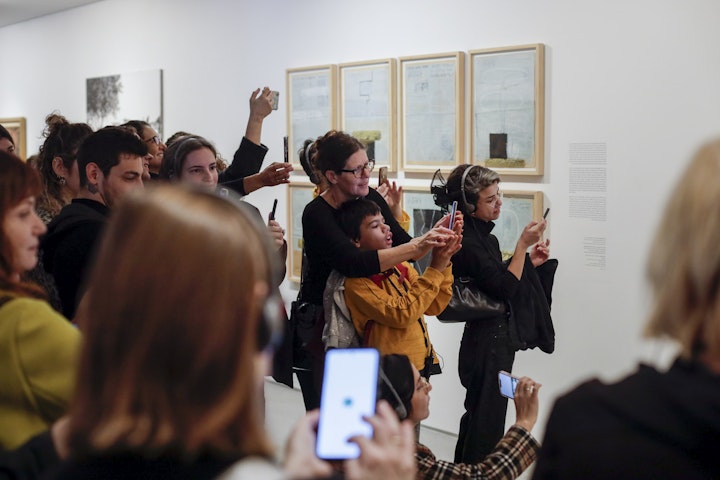
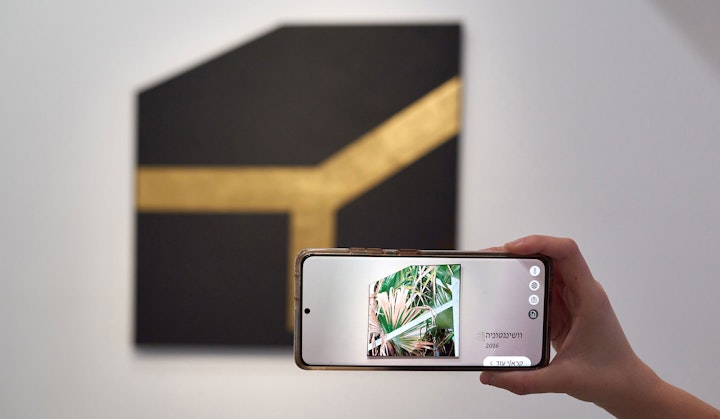
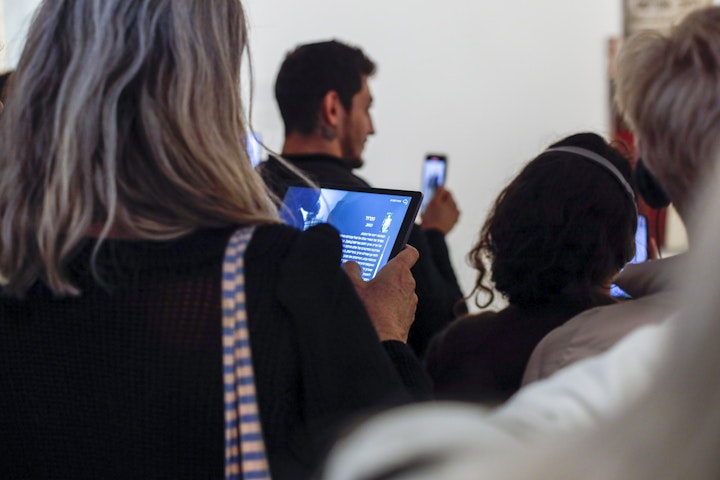

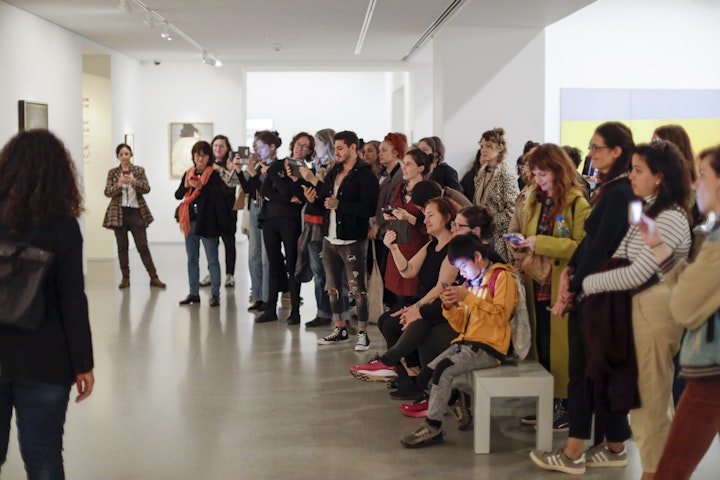
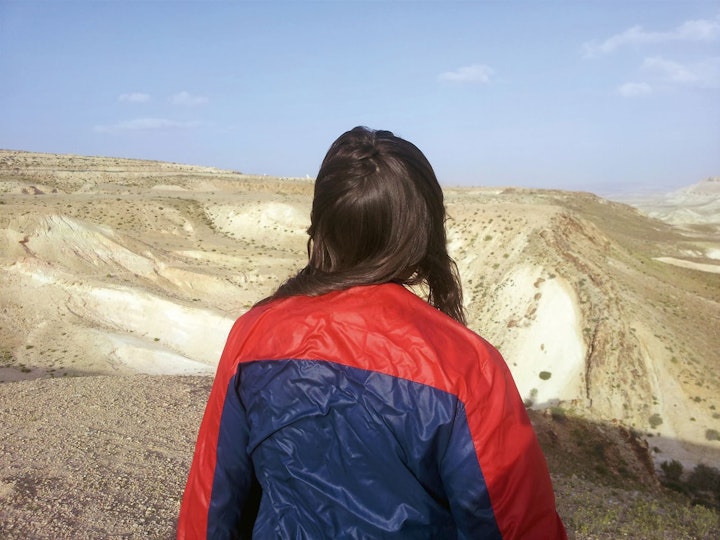
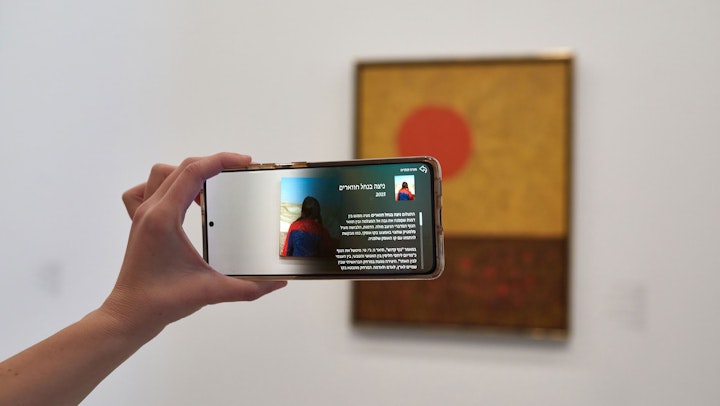
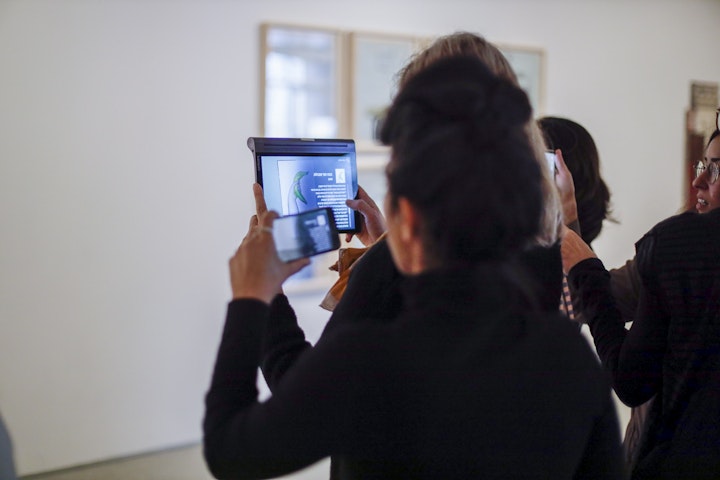

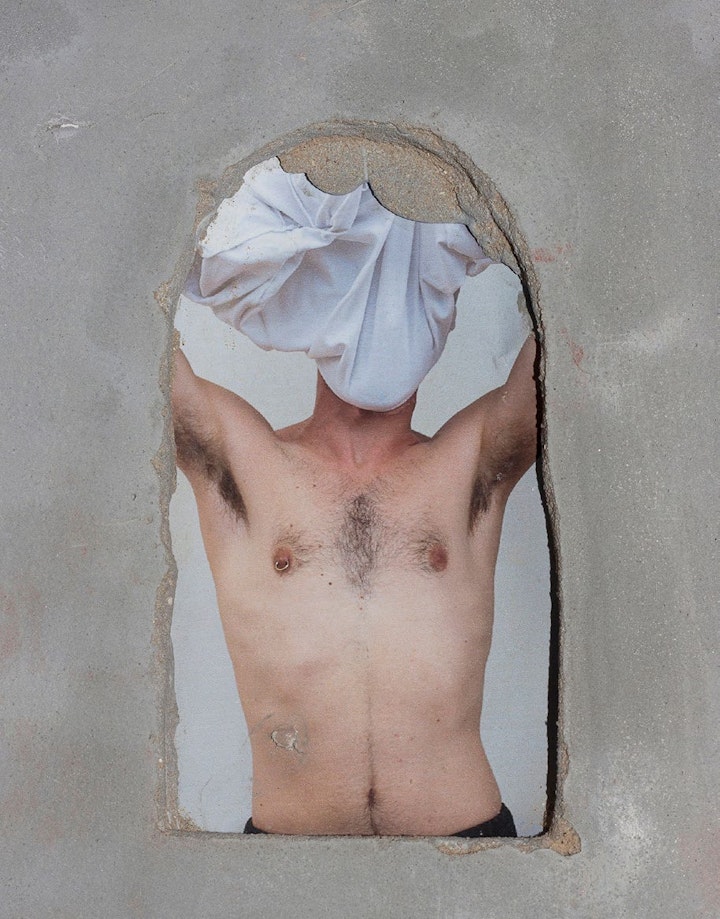

The bside curatorial platform seeks to explore the spaces of operation for museum visitors by recognizing
mobile devices as powerful tools. Indeed mobile photography has become an essential practice that cannot
be separated from today’s museum experience. The phone camera serves as a sort of third eye, an entrance
door to a virtual space that presents a scaled-down and processed version of the museum and its exhibited
artworks. bside aspires to infiltrate the virtual space and to use the latter as a critical tool that enables an
examination of how the digital object can instigate new ways of relating to the physical and human space. The
experience of using bside is dependent upon the active participation of visitors, who are required to look at
the exhibition both with and without their handheld devices. The act of adding and subtracting a virtual strata
results in a multi-layered observational experience. The visitor’s body also becomes part of the exhibition as
it activates Meiry's body of works. Bodies, whether photographed or roaming through the exhibition, “touch”
each other and the works from the permanent exhibition.
The platform’s inauguration at the Israel Museum will allow the museum to act as an arena that challenges
traditional ways of presenting and consuming art. The museum is not an absolute object but rather a political
product that reflects the power relations that created it, the contexts in which it operates and which it purposes
to represent. The opening of the museum to "living" and hybrid display models will allow for an encounter
with the ideas and perspectives of those who aren’t yet fully represented by the main cultural institutions.
Yael Meiry's virtual image acts as both an addition and a replacement to the main image. It stands in front of
the fixed canonical image, both challenging it and offering it dialogue and support
The exhibition Touch On that inaugurates the bside virtual gallery seeks to bring together the works of multidisciplinary artist and photographer Yael Meiry and the artworks on display in the permanent exhibition of Israeli art at the Israel Museum. The curatorial platform resorts to augmented reality technology to foster an encounter between the physical works hanging in the exhibition space and Meiry's works, virtually displayed via the mobile devices of the exhibition visitors. The name of the exhibition invites visitors to “touch”, in defiance of the museum’s conventional instruction "Do not touch". In Hebrew, the expression "to touch on" describes both the physical and mental action of lingering on an isolated thematic fragment, of exploring a section of time and space. Similarly, Meiry's practice often consists in cutting the image in a way that isolates the object from its original context. For Meiry, cutting is a sampling tool that acts as a "limit of reality" – once isolated from its environment and history, the whole may become more difficult to decipher. Meiry's use of "hidden cuts" and "visible cuts" produces a viewing experience that eludes any quick deciphering. The act of lingering on an isolated fragment raises questions about the body’s cohesiveness and fluidity, and about one’s sense of identity and belonging to a place. These questions are enhanced by the overlay of Meiry's works with artworks from the permanent exhibition of Israeli Art at the Israel Museum. In an attempt to thoroughly and comprehensively characterize the canon of Israeli art, the permanent exhibition presents collective and linear narratives through pivotal works from the collection, encompassing an array of movements and styles from local art history. The exhibition’s works and the themes they engage with (the body and the landscape, abstraction and memory) play a crucial role in the formation of a collective Israeli identity by their very presence within the national museum. The juxtaposition of the collection’s works with Meiry’s works enhances the former with a contemporary layer that allows for a whole new range of perspectives to surge. Through this virtual platform, Meiry, who operates from a queer position using a medium that is hardly included in the collection exhibition — photography — undermines the standard categorization of the local art history’s narrative as well as the hegemonic national narratives that it rests upon.